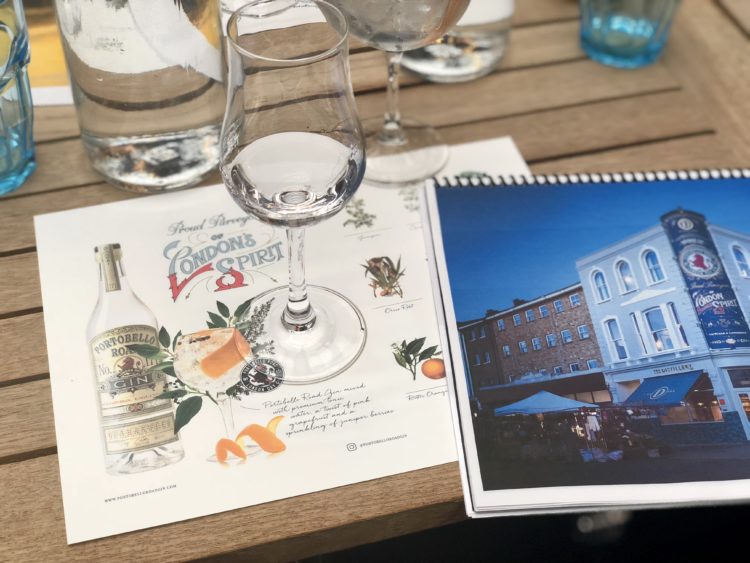It’s a big week for America’s closest allies. Not only was the third royal baby born this week, but London’s Portobello Road Gin has been officially released in the U.S.

London’s bustling Portobello Road is not full of savory mushrooms as you may assume, it’s full of gin.
Veteran barkeep Jake Burger and his buddies decided he wanted a piece of the action. Along came the Ginstitute. The London gin palace offers an exclusive workshop for folks (whom they call ginterns) wanting to craft a bespoke bottle of gin.
But, don’t be too hasty. You must first learn the storied past of gin in the U.K.
Fellow ginthusiast Alli and I were lucky enough to attend a watered down version of the Ginstitute at D.C.’s Columbia Room.
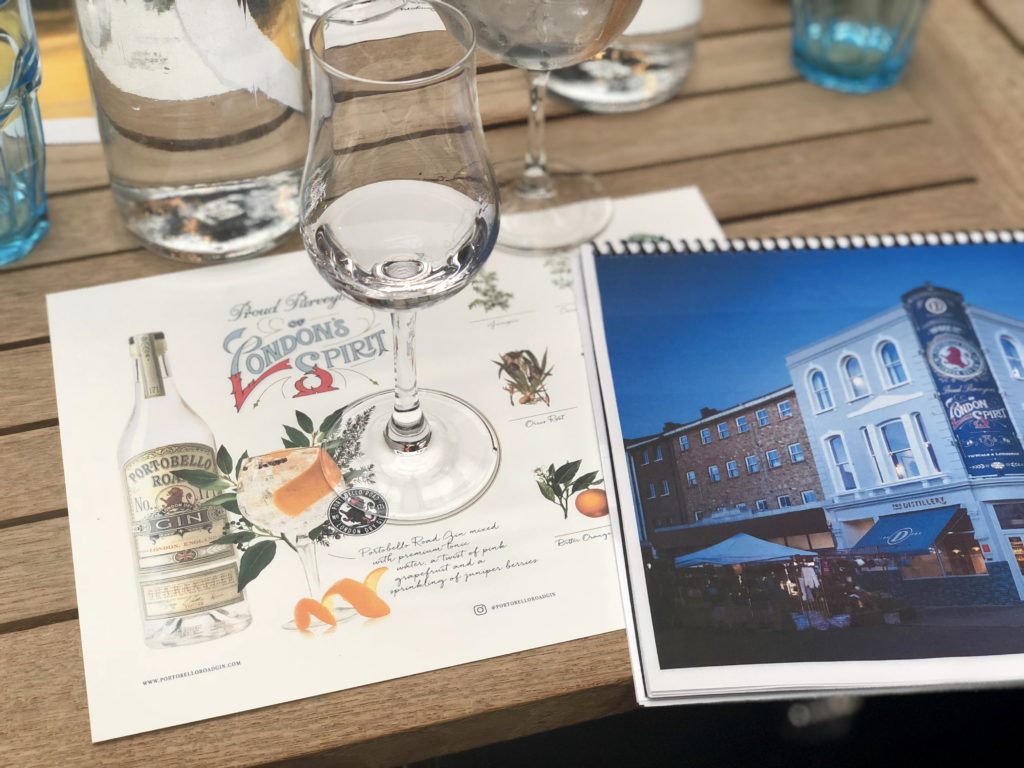
A Brief Gin History
Here’s what we learned:
The Brits were off fighting the Thirty Years War (1618-48) in Holland. The long, damp, onerous marches left the British yearning for something to lift their spirits. The Dutch had a distilled beverage aptly named “Dutch Courage” that was essentially vodka with a dash of juniper in it. The haggered soldiers found the “medicinal” properties of the Dutch liquid enlivening. The British brought the gin back to London pharmacists. However, only certain folks were allowed to distill it. Then along came William of Orange (p.s. an orange twist is a great addition to your classic gin & tonic).

William of Orange decreed that anyone and their mother could distill. Therefore, a boom of questionably qualified gin swept through London. Gin was mainly maintained by the lower class in dusty drinking dens and included ingredients that would never be allowed within arms length of a distilling still today (i.e. turpentine and sulfur). The close to poisonous beverage sunk the city into a decades-long drunken stupor.
To put this in perspective, according to Vice’s Harry Sword, the gin epidemic in the U.K. draws a striking similarity to the 80’s crack epidemic in the U.S.;
“By 1730, an estimated 7,000 gin shops (and probably many more if one was somehow able to count the untold illegal drinking dens) were catering to the trade, with some 10 million gallons of the spirit distilled each year. Historical accounts of violence, widespread addiction, and social devastation call to mind the early 80s crack epidemic that hit the US with ferocity.”
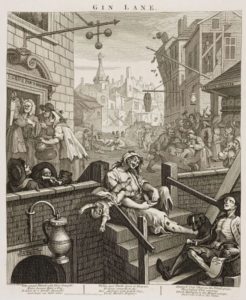
A Necessary Change
The parliament had to take action from this societal poison. The Gin Act of 1751 enforced a new regulation that small shops would no longer be allowed to sell gin, only larger licensed bars who could keep tighter quality control on the nefarious nectar.
Finally, the era of gin madness was under control. London was back on their laurels and they were ready to refine the spirit. Fast forward to modern day when Jake Burger and his team decided to spread the now sophisticated gin process to the masses.

The most incredible part of any alcohol tasting, besides getting your buzz on, is being able to decipher the smallest ingredient changes between sips of a different variation. For example, in the Cassia Distillery Gin there was a much stronger taste of cinnamon due to increased levels of cassia bark.
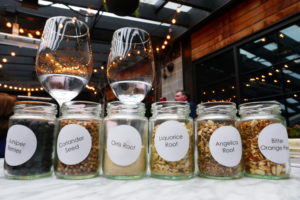
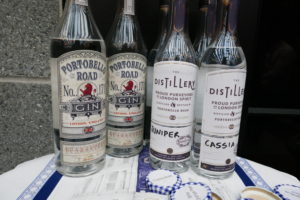
We sipped the custom cocktails with a new level of appreciation. It didn’t hurt that the scientists at my favorite D.C. cocktail bar, Columbia Room, did the mixing leg work. To top it off, C Room treated us to some nice nibbles, such as Za’atar Spiced Popcorn and grilled brie sandwiches throughout the evening.
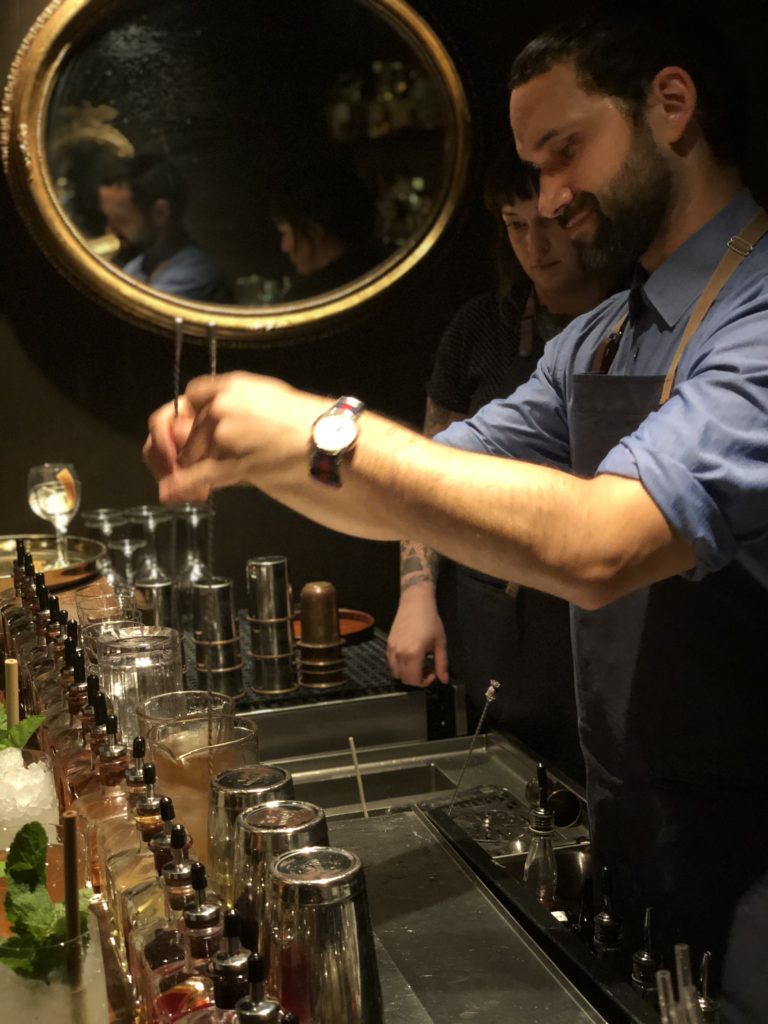
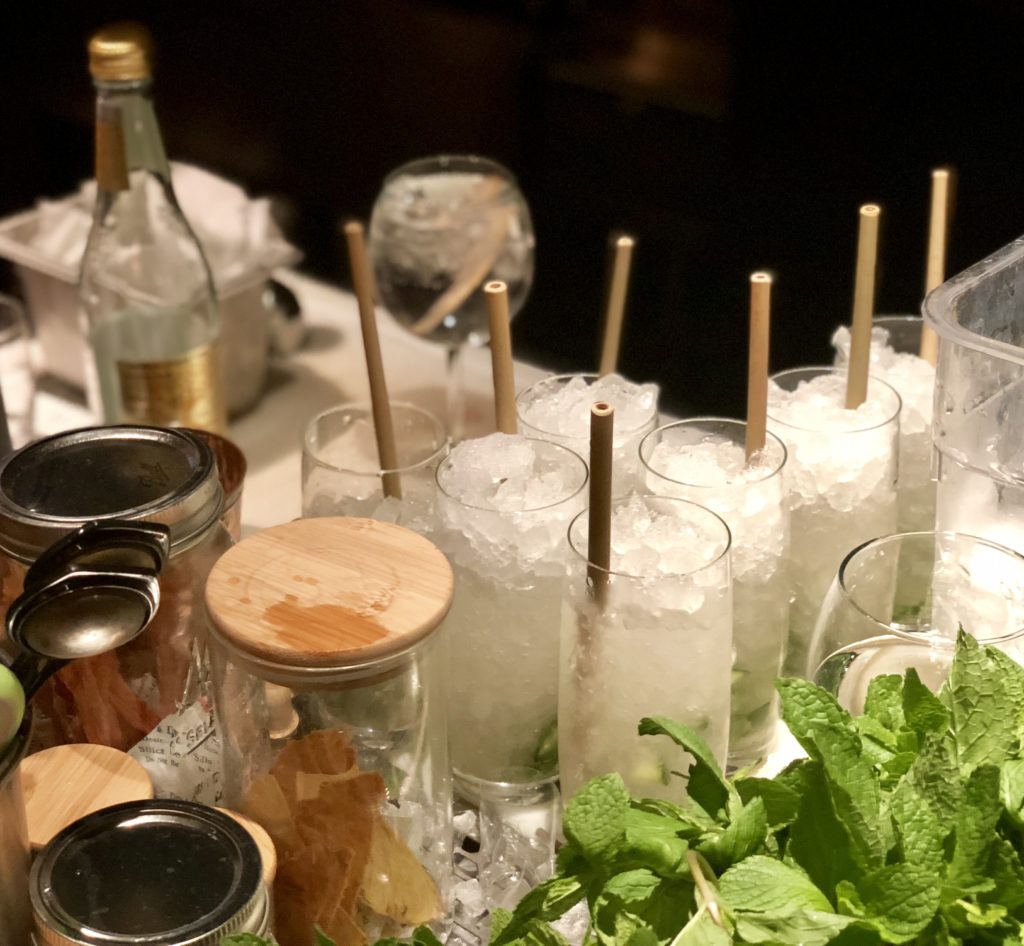
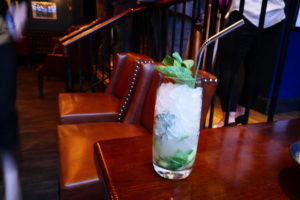
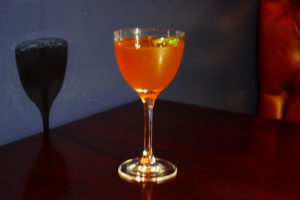
Keep your eyes peeled for the well balanced Portobello Road Gin, hitting the shelves of your favorite bar soon. Also, it wouldn’t hurt to swing by Columbia Room and enjoy the patio as the weather gets better. Drink some gin with a grin. You deserve it.
God Save the Queen.
The FULL Portobello Road and Ginstitute Experience: Website | Facebook | Twitter | Instagram

